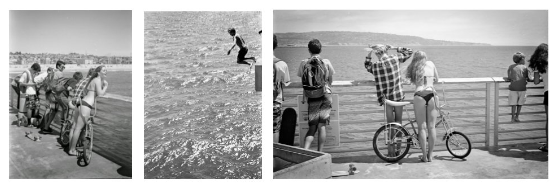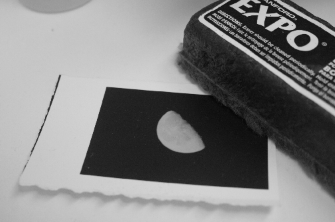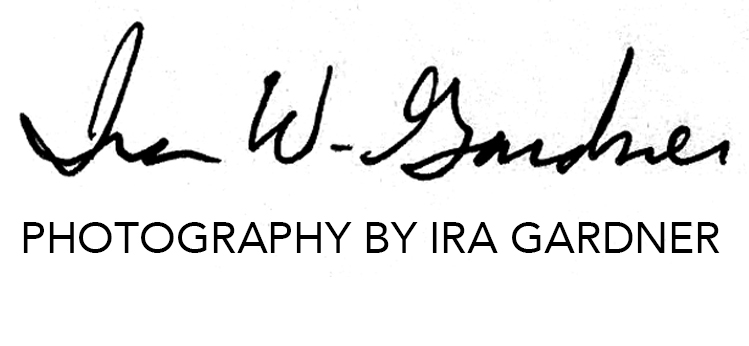Literary Photographs: An Introduction to the INEFFABLE Collection
Literature it is said, does not just mark or pass time for its reader, it deepens it. A poet like Elizabeth Barrett Browning who notes the unfolding petals of a spring rose bud sparkling with dew does so against a backdrop of inevitable summer dryness, and the blackness of winter death and decay.
A poem or a short story can take a single instance and raise our awareness and appreciation for the tragedy and beauty that is held within a single gesture that we are brought, by the author’s words, towards becoming acutely aware of its finite mortality. We are reminded that even the deepest most passionate kiss must come to an end when the need for air causes a gasp for breath.
This inevitable death is also what makes photography so poignant. The very essence of photography is an awareness that the subject photographed will die or that the landscape will change irreversibly. Within the confines of a discrete partial of time, most often a fraction of a second, life is savored.
For me photography is a Zen like experience, that is balanced between the anticipation for what I know might happen and acceptance for the unique beauty of what is right there before me in any particular moment. I must wait to depress the shutter. I must wait for the random chaotic world to organize itself into geometric patterns to fully realize an expression of something significant enough to pluck out of the stream of time and embrace it at length. To make a photograph is to hold on to the memory of a passionate kiss.
When I sit still in one place long enough I become acutely aware of the earth’s rotation and all things being in constant motion. Change is perpetual regardless of the increment.
In my images I attempt to describe the world as a writer would. I want to use the camera like a typewriter is used to give voice to ideas. Like poets, I want to explore what it means to be a human being. My photography is about attempting to transmit the ineffable.
When holding a camera I carry with me always the two questions that the great 20th century photographer Dorthea Lange asked of every photograph, “Is this my world?” If not, “what does this have to do with my world?”
I have recently begun to explain my images as being literary photographs. I started thinking about this term when I started to try to describe my personal work at a gallery exhibition. I don’t know if anybody else combines the words ‘literary’ and ‘photograph’ but I think it effectively describes what I am trying to accomplish in my work and is directly related to the Greek origins of the word photograph which literally translates to writing with light.
I am thinking about this idea even more as I witness people using their cellphones to make pictures of every moment of their life at ever increasing resolution. The sheer simplicity for collecting huge volumes of data and imagery has made me look further into what it is I do and how it differentiates from the tools I use to do it with.
I do not worry about whether or not a cell phone camera will make my work obsolete. I don’t worry about what kind of camera I use. I happily carry a cell phone in my shirt pocket and pull it out every day to make visual journal entries much like the newspaper reporter who keeps a small notepad and pencil in their vest pocket to record the who, what, when, where, and why notes that will later be shaped into a story.
I do not subscribe to the traditions of selfies or candid snapshot family photographs, nor do I create the kind of imagery that one would describe as being commercial. By that I mean that I do not seek to glamourize or beautify the subject. I prefer to work within the ideals of seeing the beauty that is found in every subject and amplified by the quality of light illuminating it. Dorthea Lange’s Migrant mother might better describe the family portrait I would make.
In looking at my work I can see the parallels to the ideas and aesthetics of the books I have read. I have explored the places that served as the backdrop for the many writers who distilled moments into words such as E.B. White’s New York, Charles Bukowski’s LA, and John Steinbeck’s migration from the dustbowl to the American West. I rarely pick up my camera unless something I see or hear triggers a powerful memory. I am always accompanied by the sights, sounds and the memories of all the people and events that have shaped my life.

Recently I heard a young girlshouting, “I’ll kiss you if you jump!” and I instantly brought my camera up to my eye and observed her cheering on a young man trembling in fear as he contemplated taking a plunge into the ocean. He would eventually jump, she would leave with some other boy, and he would be forever changed by the experience of conquering his fear.
I could relate to that moment. I could remember a moment like that in my own childhood. Every time I photograph I fall in love just a little bit and with each new image I am altered by the experience.
Like all tools, the camera is an neurobiological extension ourselves. With the camera I can extend my vision to far off details or extreme closeups. It is also an extension of my mind and the inner dialog made from memories. Photographs supply the clues to help recall the joy of an intimate conversations with a lover under a bright yellow harvest moon and the sorrow of heart breaking grief that is realized alone in the darkest of moonless nights.
It has also been through the darkness that the greatest personal growth has ocurred and the deepest sense of universal connection has been found. Through times of deep sorrow and profound loss I have found my self and emerged slowly into the person I was meant to become. It is only during the darkest of nights when we can see the brilliance of the stars and cosmos beyond.

These personal life lessons inform my photography and my photography informs my understanding of myself. For me the beauty of darkness is found through its death at the hands of daylight. Night is juxtaposed within the confines of the morning sunrise that traps me into seeing only what is there right in front of me, the life I have made for myself thus far. Daylight makes the stars and the depth of the universe disappear and holds me accountable to what is; while the night stirs and churns the world of possibilities, imagination, and dreams.
In between morning and night is the interplay of light and the shadows that are always tethered to my physical self. Early morning or late evening light casts long shadows that makes me appear 12 feet tall along a snow covered dirt road. These are the times of day where I can still remember my dreams and imagine the possibilities in everything before me. This is also the time of day that great photographs are made as every photographer knows.
But my dreams can only be dreams as long as there is a boundary that separates the subjective (imagined) self from the physical self (reality) in a night and day relationship. The whole is formed from this combination of the real and the imagined just as the photograph is defined by the textures formed from the notan of light and dark values.
I think that photography for me is an exploration of this connection between the real and the imagined that forms our understanding of the world and our place in it.
Perhaps film photography is the epitome of this night and day Zen conversation. Photons tickle the film’s emulsion and form a hidden latent image that, after processing, becomes the negative “night” image that is full of possible interpretations in the making of the print in the darkroom. It can be cropped and recomposed and its lightness and contrast altered. It is only after it is fixed and made more permanent that it can be brought out into the light as a finished positive print that defines the representation of that moment indefinitely. It is the fixed image in the light that has emerged from the infinite possibilities that existed in the darkroom.
Last year I spent time camping on the shores of a lake in the Selkirk mountains of Idaho. My only goal for that week was to dive into summer reading. I selected a collection of short stories by Wallace Stegner. As I read the introduction I could understand my own connection with poetry and short stories and why the bond with those art forms and photography are so strong for me.
In his introduction, Stegner writes of how difficult it is to craft a short story and how the author uses up so many great beginnings and endings while attempting to find meaning to life in the few pages we have in between.
Photographic images have a syntax and grammar similar to written language and is even considered a universal language due to its detailed pictorial description rather than the abstract images of letterforms that must be interpreted through mutually agreed upon cultural norms.
But I think photography as a language differs significantly in terms of how a story is written in so far that I think the photograph operates strictly within the pages that are in between the beginning and end.
The viewer must write their own epilogue. I think the beginning comes from the photographer’s life experience, who recognizes and anticipates the moment that is being recorded. If it is well composed and full of life the viewer can read the image and feel the image’s inevitable conclusion.
This is not to say that photographs can never represent beginnings and endings. I have made photographs that show a trail entering a forest and you can clearly feel a sense of beginning and I have recently viewed the heart tugging images of a photojournalist friend’s father passing away that speak to the conclusion of that arduous and dramatic journey that is cancer. Richard Avedon made similar images of his dying father that were controversial at the time. In these gut wrenching images we feel the internal conflict of the maker and his father, and in that are connected to our own humaneness.
However I think a photograph always leaves something more to be questioned. If a writer chooses an omnipotent voice, words can supply concrete expression of meaning whereas even the most concrete realistic representation of a photograph always operates within the subjective space of the viewer’s interpretation of visual sensory input.
At its best, photography triggers an intense dialog with your conscious thoughts. It does this by mirroring the fact that we see before we speak. This is what I love about photography. It is non-verbal and it acts upon us subconsciously.
For me a photograph is a negotiation of three elements: the subject I am photographing, its composition within the frame of my viewfinder (insert vocabulary word anisotropicity here), and the quality of light that affects the mood and conveys an emotive quality to the image. It is Stieglitz’s photographs of clouds that he called ‘Equivalents’ that explored the emotional content of a photographic image while at the same time conjuring up our awareness and remembrance for just how quickly a cloud floats past us as we lay down in a field and gaze upward.
I want to show the viewer something worth forming words that go beyond “like” and “dislike” in your conscious thought. I am not interested in making photographs that simply categorize or identify the subject. I am interested in making images that have multiple possible meanings and outcomes.
An image of a hallway leading to a door is more than sum of the elements within the frame. While it exemplifies one point linear perspective and contains a minimal amount of physical subjects, I hope it can inspire the viewer to think and dream about the interior of their own lives.
While at its lowest denominator it is only a picture of a hallway and a door, I am striving, through the quality of modulated light and the emptiness of the space, to create a photograph that describes the very real journey we all take to our unknown future. All the elements are there to express the very human experience of our life’s trajectory.
The long hallway, the emptiness and hardness of its surface, and the handrail that offers support and guidance and leads us to the doorway but stops short of it may be thought of metaphorically as the hand of a friend that walks beside us who may have already gone through a similar life event but cannot pass through the doorway of our own experiences, or the sacred text that offers steadfast guidance to endure the light and dark moments of our life that are taking us towards the closed door with an unknowable afterlife that lies on the other side.
Photography dances across many philosophical arguments. The landscape photograph that seeks the beauty of form and golden mean proportion is the consummate expression of naturalism and the ideals of universal truth while the more ambiguous and darker social documentary photographs that resemble Edward Hopper’s Nighthawks painting of a diner at night illuminates the ideals of existentialism and the meanings we ourselves create from within. It is like an ongoing discourse about the existence of God and free will.
John Szarkowski describes photography as being both a window and mirror. It offers us an external viewpoint on the world and introduces us to far away places and cultures while revealing an internal truth about ourselves and what we choose to look at, and the symbolic meaning we assign in our judgement about what is recorded.
Photography is like the pourous membrane of our skin that is the barrier between the outside and inside. With my camera I am pointing to something outside and absorbing its meaning into the interior of my being where it is felt deeply. In my heart I am a humanist photographer along the lines of Eugene Atget and Henri Cartier-Bresson whose images I think celebrated the triumph of human spirit over war and economic poverty but artistically my work probably more closely resembles that of the American photographer Walker Evans in its formality and critique of the temproral nature of consumer culture.
As it turned out Walker Evans himself had tried to become a writer. He worked shelving books in the New York City library system while writing short stories and essays and accumulating the resources and a promise from his father to support him for a year as he made a pilgrimage to Paris like so many other great authors did at the beginning of the 20th century.
Perhaps it was his own shyness that led him to the more observational art form of photography. Evans was too quiet to join in the conversation with authors like Erza Pound, T.S. Eliot, Ernest Hemingway, and his personal favorite, James Joyce, who all signed the guest book at the Shakespeare & Company bookstore on the Left Bank during that time.
It was Joyce’s Ulysses that convinced Evans to abandon writing. He could not see where he could contribute anything more to literature. Joyce’s writings became somewhat like a lunar eclipse that perpetuated a life long case of writers block for Evans. He turned to writing poetry with his camera instead.
Like Evans, my first job in high school was shelving books at a public library. Throughout my childhood I immersed myself in books. When I visited Paris a few years ago I walked to the site of the current iteration of Shakespeare & Company and paused, peered in, and like Evans continued on with my camera without going inside. The aura of this historic place didn’t draw me in as much as the wonderment of being out in the streets and alleyways of Paris with my camera.
It is with my camera that I try to bring attention to the philosophical gap between what is seen and what is known and create a momentary pause for self reflection in a world that seems too complex and a culture that seems too simple.
I hope, in each of the moments I capture, to share a sense of dignity and gratitude for life. This is my attempt to transform reality into a literary photograph filled with poetic realism that deepens understanding.
Going through my mail I came across a postcard from the Poetry Foundation. On the front of it is a quote from the editor of Poetry Magazine that says, “Let us remember… that in the end we go to poetry for one reason, so that we might more fully inhabit our lives and the world in which we live them, and that if we more fully inhabit these things, we might be less apt to destroy both.”
I think the poetry comes from gazing more intently at all the beauty, tragedy, and banality that I find in the world and to seek from it the gift of wisdom. This is what I want to share with you in these pages.

